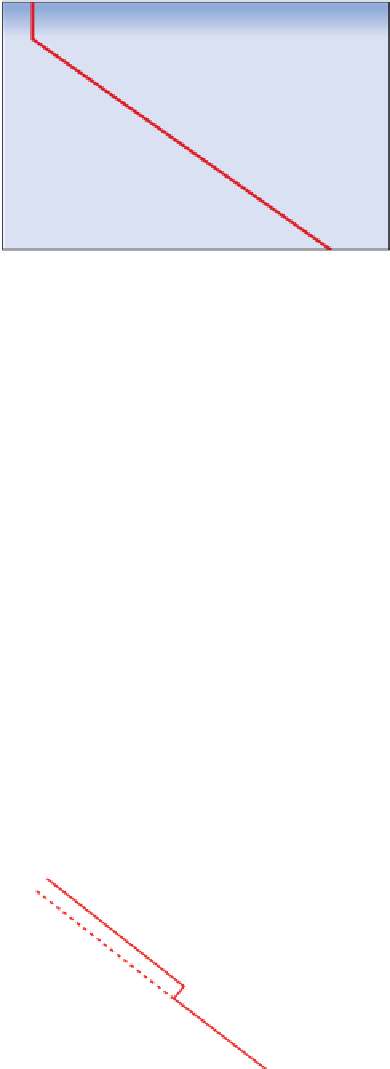Geoscience Reference
In-Depth Information
The thickness of the troposphere depends largely on tem-
peratures at the Earth's surface; therefore, it varies with season
and latitude, ranging in thickness from about 16 km (10 mi) at
the Equator to approximately 8 km (5 mi) at the poles. Why is
this so? Recall that the low latitudes have a net surplus of radia-
tion because these regions receive more intense solar radiation.
Thus, near the Equator, more radiation is transferred back to the
atmosphere as longwave radiation, which heats the lower atmo-
sphere. The higher temperature causes the atmospheric gases to
expand, making the troposphere extend higher from the Earth's
surface at the Equator than at the poles.
Although temperature usually decreases in a fairly predict-
able way with altitude in the troposphere, conditions some-
times develop when warm air overlies cold air. Such a pattern is
called a
temperature inversion
(Figure 5.3a) and can develop
Temperature, °F
40
-80
-40
0
80
9
14
Tropopause
8
12
7
Troposphere
10
6
8
5
4
6
3
4
2
Environmental lapse rate:
6.4°C/km (3.5°F/1000 ft)
2
1
0
0
-60
-40
-20
0
20
Temperature, °C
Figure 5.2 Environmental lapse rate in the troposphere.
The
average temperature decreases with increasing altitude in the
troposphere until it reaches Ľ57°C (Ľ70°F).
Normal situation
1000 m or 3.5°F per 1000 ft (a positive lapse rate). At the up-
per limit of the troposphere, which is called the
tropopause
,
the temperature stops decreasing and begins to increase into the
next layer of the atmosphere. The tropopause is found at the al-
titude where the air temperature is
Ľ
57°C (
Ľ
70°F), which again
varies depending on latitude.
Cool air
Warm air
Hot air
Tropopause
The top part of the troposphere, which is
identified by where the air temperature is
Ľ
57°C (
Ľ
70°F).
Temperature inversion
A layer of the troposphere in which
the air temperature increases, rather than cools, with altitude.
Temperature “Inversion”
A layer of the troposphere
where the temperature warms,
rather than cools, with altitude.
Temperature inversion
Cold air
Inversion layer (warmer air)
Temperature decrease above inversion
Altitude
Cool air
Temperature inversion
Normal temperature
decrease with altitude
Temperature
(a)
(b)
(c)
Figure 5.3 Temperature inversions.
(a) A temperature inversion
develops when warm air overlies cold air at some altitude within
the troposphere. (b) Airflow in the troposphere under normal con-
ditions (top) and when an inversion exists (bottom). Under normal
conditions, warm air at the surface easily flows vertically. When a
temperature inversion exists, however, the warm layer serves as a
cap that keeps air from moving upward (c) Smog in Mexico City.
Smoggy conditions can develop in large cities when a tempera-











































































































































































































































































































































































